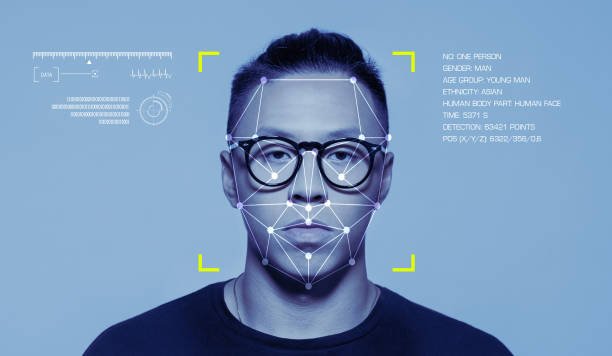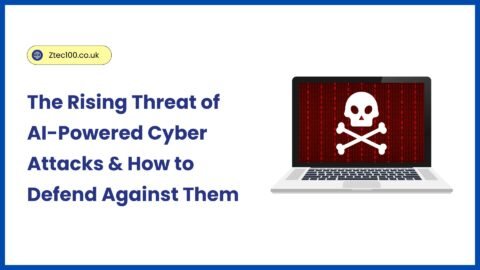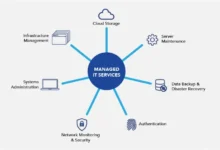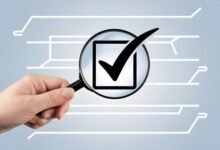Facial Recognition System: The Key to Enhancing Public Safety

Introduction: Awareness of Facial Recognition Technology
What is a Facial Recognition System? The facial recognition system is a very effective device that has revolutionized how security and law enforcement organizations improve public safety. This is an advanced kind of biometric face recognition technology that recognizes and verifies a person’s identity considering his features on the face. This is a biometric facial recognition system recording and interpreting face information to convert it into a unique identifier for all human beings. It has increasingly become very significant in multiple markets, above all the security, law enforcement, and public safety segments, for which its uses are expanding further.
We talk about what a facial recognition system is, how it operates, its benefits, the ethical issues, and how it has proven to be an indispensable tool in ensuring public safety in this article.
How Facial Recognition Works: A Technological Overview
Appreciating the true power of a facial recognition system requires an understanding of how it works in detail. Biometric face recognition works through complex algorithms and machine learning by comparing a person’s face to a database of stored facial data. The system captures an image of a face, whether it is through photos or live video, and then analyzes key facial features such as the distance between the eyes, nose shape, and overall structure of the face. These data points are then translated into a unique numerical code.
This will enable the biometric facial recognition system to identify persons with high accuracy. It, in one way, converts the biological characteristics of a person’s face into digital data that allows the differentiation of one individual from another.
Face Recognition in Public Safety Applications
Its high demand because biometrics of the facial recognition system are very widely used for public safety. An automated facial recognition system makes a contribution to making security much more efficient in detecting actual threats in real time. These are being used for all kinds of purposes, including criminal identification and looking for missing people, making overcrowded public areas safe.
Most widely used applications of face recognition employ space including places public like airports sports arenas and railway stations. Software that is deployed at various places in facial recognition serves for crime prevention identifying those wanted criminals as well as identifying missing persons indeed there are several facial recognition companies already proposing the solution with large installations so such places would not risk any more in the public space.
Facial Recognition Systems: Improving Crime Prevention
The major advantage of a facial recognition system is that it upgrades crime prevention. From the police, biometric facial recognition systems track their suspects in real-time while identifying criminals and helping prevent other criminal activities beforehand. With the installment of facial recognition system software installed by the police in various public places, it becomes easy for them to trace people who could have been engaging in some criminal activities.
Biometric face recognition, can scan through the database of criminal faces fast and, in a second, identify who is implicated in the commission of the crime, and law enforcement will have no trouble identifying that person and act appropriately. Such a process doesn’t just hasten crime solving but also hastens the police in investigations, thus becoming safer for everyone.
Facial Recognition among Police Surveillance
Most law enforcement agencies worldwide have integrated automated facial recognition systems into their surveillance infrastructure. Installation of the facial recognition systems has meant that the police force has been able to conduct real-time surveillance even in the densest areas. They can scan crowds and track people of interest at an amazing speed and accuracy.
Using the facial recognition system software limits the number of human errors in the monitoring capabilities and the means through which law enforcement can respond very quickly in any emergencies. This makes it possible to apprehend suspects quickly, locate missing persons, and decrease the overall time spent solving crimes because they can compare faces to a database instantaneously.
Public Safety and Security: The Use of Facial Recognition in Airports and Public Venues
Biometrics facial recognition systems are very relevant to examples like in airports and access points for transport. Application of biometric face recognition in such institutions helps with speedy checking of identities not involving physical documentation like ID or passport.
For example, airports have installed a facial recognition system that accelerates procedures for security checks. Now, a passenger can pass through a specific gate with the face scanned to find a match in some kind of database, hence saving much time at a check at security. Meanwhile, facial recognition systems had enough news to fill for announcements of finding people on “most wanted lists” or of apprehending potential threats while yet at a nascent phase.
Many other public places, such as stadium venues where games are staged and shopping malls, are resorting to facial recognition system software that tracks crowds and has a high suspicion index over doing something wrong, hence preventing all kinds of crimes and making those places safe havens while allowing officials to react faster if the activity arouses suspicion in any way.
Ethics Concerns and Privacy of Facial Recognition
Although it had enormous benefits, the biometrics of face recognition Technology created several issues over questions such as privacy and civil liberties. Since these systems acquire the person’s private information, the apprehension of its being misused as an instrument of mass surveillance in contravention of rights and individual liberties prevails. Without appropriate regulations, biometric face recognition will lead to the destruction of personal privacy by giving room for surveillance of a person without their permission.
For instance, even when biometric facial recognition systems were monitoring public spaces at certain times, there was controversy over balancing security and privacy. Most advocates of civil liberties have contended that facial recognition technology should be regulated very tightly and that it should be used only for public safety reasons and not for unfettered surveillance.
Regulation and Legal Framework of Facial Recognition Technology
Many governments have initiated the process of creating regulations regarding biometrics in facial recognition systems because the motivation for deploying facial recognition systems in public spaces is the protection of individual privacy. Some countries have already started drafting legislation that would require companies and organizations to obtain prior permission before installing surveillance and security measures that rely on Face Recognition Technology.
Most current instances are based on transparency wherein the public will demand to be told when the biometric facial recognition system is being activated. For example, it is a common requirement by most cities that businesses and the local government must affix a board stating that surveillance cameras with facial recognition will be deployed.
Future Future for Facial Recognition: Most Current Innovations and Trends
As the technology keeps advancing, biometrics will be used in facial recognition. Future innovations will have even more precise, faster, and efficient systems that could tell faces under demanding conditions- low light, high speeds, etc. The ever-increasing use of AI and ML will help facilitate facial recognition software for the system to continue developing to become smarter and more intuitive.
In the future, we could easily anticipate that face recognition will be in use in security applications in the healthcare, retail, and entertainment sectors. For instance, it may be used in retails for personalizing the shopper experience while healthcare providers use face recognition to identify patients or generally improve healthcare security.
Limitations and Challenges of Face Recognition in Public Safety
Such systems are accompanied by challenges and therefore, some limitations to the great potential of biometric facial recognition systems. First, there is its accuracy, and it is compromised by many factors including low image quality and changes to the face caused by aging or physical alterations due to scars or makeup.
Another critical challenge should be that the system could ensure of detecting its people crossing through the various demographics properly. Findings have been realized about the biometrics of facial recognition systems that cannot find correct people of color. Large concerns about the result of racial bias there, that is, for the people developing these facial recognition systems: their companies are trying to work towards that effort in trying to get all the accuracy regarding their demographics.
Another problem is spoofing and hacking biometric face recognition systems. The more facial recognition systems biometrics are adopted, the more chances there will be for cyberattacks against those systems, which means more significance to cybersecurity.
Case Studies: Real-Life Examples of Facial Recognition Increasing Safety
Several case studies will be presented to demonstrate the real-world use of biometric facial recognition systems to enhance public security. For instance, United States airports such as Atlanta and Los Angeles already employ the use of biometric facial recognition face recognition systems that have so far enhanced security for travelers by increasing the percentage identification of passengers and decreasing waiting time.
These automatic facial recognition systems have played an important role in public safety in China. They have efficiently helped the police identify suspects in very congested cities.
For example, it is a massive public function that is how one of the criminals was caught after facial recognition software highlighted him.
Achieving a Balance between Public Safety and Civil Liberties: Seeking an Appropriate Course
The biometrics of facial recognition systems create a fragile balance between improving public safety and protecting individual freedoms. Technology’s undeniable advantage in preventing crimes through facial recognition systems raises issues related to privacy, surveillance, and consent.
It is, therefore the regulation of the use of biometric facial recognition systems that will ensure that the technologies are used ethically. Transparency, accountability, and public oversight will be very important in keeping this balance, ensuring benefits from facial recognition technology without violating people’s rights.
Conclusion: The Potential and Pitfalls of Facial Recognition in Ensuring Public Safety
The facial recognition system stands before modern security and law enforcement tools. It is sure to play an immense role in the future of safety due to the possibility of improving crime prevention, public safety, and smoothing security processes. However, the dangers of misuse and violations of privacy require caution and a balanced approach toward its adoption.
As technology advances, these facial recognition systems biometrics will surely become a more integral part of life, and as regulations and the proper ethical framework are also in place, we shall be able to use the powerful technology to its full potential without violating the rights of others.







